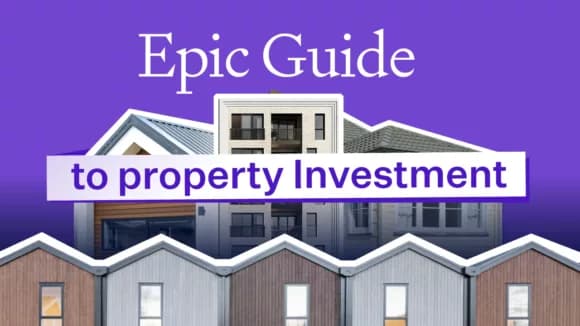
Property Investment
Property investment NZ – The epic guide to property investment
Explore the latest in NZ property investment with our comprehensive 2026 guide. Gain insights into strategies and detailed steps for success.
Case Studies
6 min read

Author: Laine Moger
Journalist and Property Educator, holds a Bachelor of Communication (Honours) from Massey University.
Reviewed by: Ed McKnight
Resident Economist, with a GradDipEcon and over five years at Opes Partners, is a trusted contributor to NZ Property Investor, Informed Investor, Stuff, Business Desk, and OneRoof.
Single mum Tanya was 8 years away from retiring when she came to Opes Partners for investment advice.
Here’s how she used 4 investment properties to build $79K of passive income.
Everything in this case study is true to life (goals, salary, property prices, the Opes financial adviser they used). Only the names have been changed to protect their privacy.
Do you have a question or comment about this case study? Feel free to leave your thoughts in the comment section at the end of the page.
Tanya was a 57-year-old single mum with 2 teenage boys at home. She had a full-time job but was a one-income household.
Tanya met Andrew Nicol in 2013, when he was first setting up Opes, which makes her one of our original investors.
At that point she’d worked hard and was mortgage-free on her own home, and was paying down principal and interest mortgages on her 2 investment properties.
She planned to retire at 65, which meant she had 8 years to create a plan and invest for her retirement.
To create a property investment plan you need to figure out what you’re investing for (your goals). Once you have your goals figured out, you can decide how ambitious your plan needs to be.
Said another way, what this means is: “How much money do you need to make your goal a reality?”
But here’s the thing: Tanya didn’t have a specific passive income figure in her head … she just knew she wanted a comfortable retirement. For her that meant she wanted to:
Tanya came to Andrew long before we built out own software MyWealth Plan, which is used to create financial plans for property investors.
This meant Andrew had to rely on Excel to work out the figures.
In addition to her mortgage-free home, Tanya also had 2 investment properties:
You might look at these numbers and think “Ah, those were the days”. But don’t let these numbers fool you. At the time these house prices were considered relatively expensive and it was a big decision for Tanya to purchase these. It’s only in hindsight that they look relatively cheap.
But even though these properties had increased in value since she purchased them, in 2013 Tanya still had a wealth gap. She wasn’t on track to have enough assets to live the retirement lifestyle she wanted.
Had she done nothing else, she was on track for a passive income of $23,750 a year. This isn’t bad, but she felt this level of income would still make her reliant on the government pension.
It was time to figure out how property could be used to fill this Wealth Gap.

Tanya bought 2 more properties.
#1 – A standalone property in Halswell, Christchurch.
This property was bought for $400k in 2013, which is about $500k cheaper than what you’d pay today. But at the time of purchase it was a bit out of her comfort zone and it was only 2 years after the earthquake. For her it was a big decision.
#2 – Four years later, Tanya bought a high-yielding apartment in Wellington for $525k.
As well as these 2 properties, Tanya switched her 2 existing investments from a principal and interest mortgage to an interest-only mortgage. This was done to free up cashflow.
So over those 15 years Tanya had bought 4 investment properties and spent $1.4 million, with all of the deposits borrowed against her own home. She hadn’t put in a cash deposit for any of them.

Tanya retired in 2021 at 65 years old. By the time she hit retirement her portfolio was worth $3.5 million.
In 19 years of investing her properties had increased in value by $2.1 million.
When Tanya first bought that Auckland property in 2002, she never thought her properties could build so much wealth.
But there was still work to be done turning this equity into a passive income. Here’s how she did it.
So, the first thing she did was sell the 3 standalone houses. These properties tend to grow in value faster, but have a poorer yield.
By selling these she could take the money and pay off the mortgages on those three houses.
After paying off the mortgage Tanya had a significant amount of cash left over. She used it to pay off the debt on her high-yielding dual key in Wellington, which meant she know owned it outright.
She then used the rest of the cash to buy another high-yielding apartment.
Because she then owned two properties with no mortgage, Tanya could live off the rental income.
As of last year, her 2 dual-key apartments earned $79k a year, after paying all the operating costs (e.g. rates, insurance, maintenance).
What does that mean? It means before Tanya gets out of bed in the morning she has a passive income of $1500 a week coming in, without even factoring in superannuation.
With superannuation it’s $106,000 a year.
This income has no end date, which means Tanya can live forever and always have these assets that produce an income.
This was the transition from building wealth, to creating a passive income.
Finally, Tanya wanted to help her 2 sons get onto the property ladder.
So throughout her journey she was able to use the equity within her own home to help guarantee part of the deposit for her sons’ own homes.
This helped one of her sons buy his own home in Auckland, while the other bought a house in Foxton.
Tanya paid a lot less for her properties than an emerging investor would today. Properties increase in value – that’s the point of investing.
But it doesn’t mean investing was easy for Tanya. And it certainly doesn’t mean that an investor today can’t have the same success.
The point is that Tanya’s story demonstrates what’s possible for investors today.
And although it’s hard to build this sort of portfolio on one income, she did two things well:
On average, she only bought a property every 4 years.
This is an important lesson for today’s investors. Sometimes an investor will worry about how they’re going to buy their 10th property, before they’ve bought their first one.
Planning for the future is important. But, it can also lead investors to shoot themselves in the foot and and not invest at all.
Worry about your first one; then your second one; then you're third.
Write your questions or thoughts in the comments section below.
Journalist and Property Educator, holds a Bachelor of Communication (Honours) from Massey University.
Laine Moger, a seasoned Journalist and Property Educator holds a Bachelor of Communications (Honours) from Massey University and a Diploma of Journalism from the London School of Journalism. She has been an integral part of the Opes team for four years, crafting content for our website, newsletter, and external columns, as well as contributing to Informed Investor and NZ Property Investor.
This article is for your general information. It’s not financial advice. See here for details about our Financial Advice Provider Disclosure. So Opes isn’t telling you what to do with your own money.
We’ve made every effort to make sure the information is accurate. But we occasionally get the odd fact wrong. Make sure you do your own research or talk to a financial adviser before making any investment decisions.
You might like to use us or another financial adviser